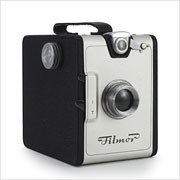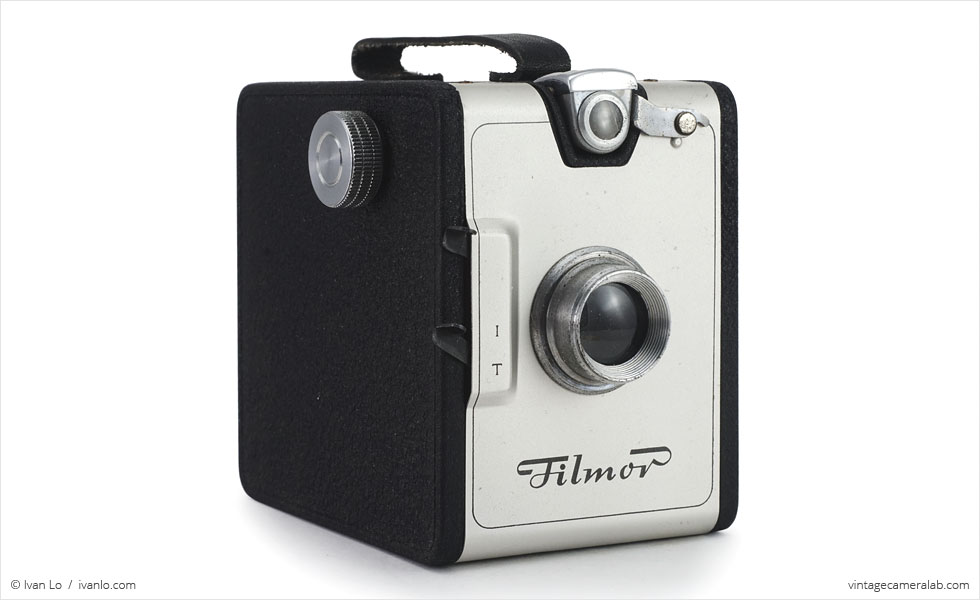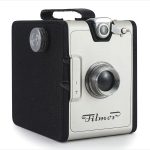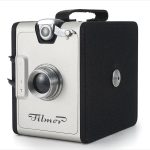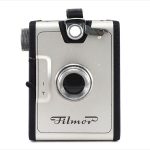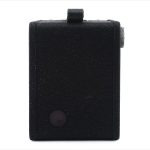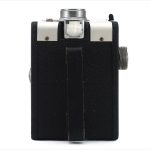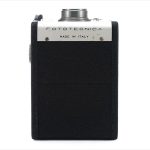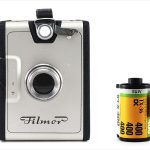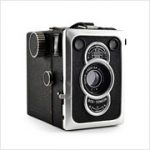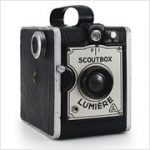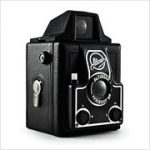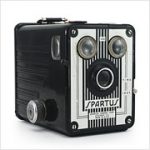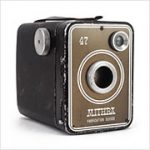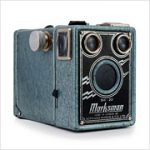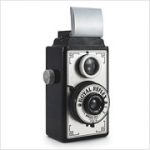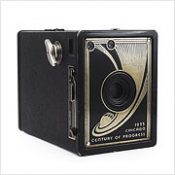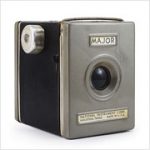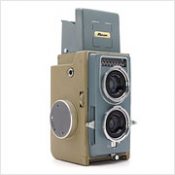Fototecnica Filmor Specifications
| Manufacturer: | Fototecnica Torino |
| Origin: | Italy |
| Made in: | Turin, Italy |
| Introduced: | 1950 |
| Type: | Box, Viewfinder |
| Format: | 120 Film |
| Dimensions: | 7.1 x 9.6 x 10.9 cm |
Fototecnica Filmor Overview
The Fototecnica Filmor (also sold in Australia as the Hanimex Eaglet) is a simple metal box camera debuted in 1950 by Italian manufacturer Fototecnica Torino. Not to be confused with Germany’s Vredeborch Filmor, Fototecnica had two Filmor models, the one you see here with a rotating waist-level viewfinder and another model with a tube-shaped eye-level finder much like that found on the Herco Imperial.
Unlike most box cameras which have two waist-level finders (one for portrait and one for landscape orientation), the Filmor has a single finder on the top that can rotate as needed not unlike those found on older folding cameras such as the Franka Rolfix Jr. and the Ernemann Heag II. The shutter is controlled by a metal lever on the user’s right hand side of the faceplate alongside a shutter mode selector with only two speeds: I (for instant, approximately 1/60) and T (for Time, the shutter will stay open for as long as the shutter lever is depressed). The lens has a fixed aperture of approximately f/11.
On the user’s left hand side of the camera is a round metal latch that can be pushed upwards to unlock the body for loading and unloading film. The film advance knob can be found on the right hand side. A leather carrying handle is located on the top and a red window through which frame numbers can be monitored is on the back. Like many box cameras, the Filmor has no tripod socket.
Despite its simplicity, there’s a lot to like about the Fototecnica Filmor. It’s Italian and stylish in the way that so many things from Bel Paese are. The build quality is also noteworthy, being made of stamped metal when so many of its contemporaries are made of cardboard. Then there’s the unusual rotating viewfinder, a feature not found on any box camera that I know of apart from the eerily similar Lumière Scoutbox. The connection between the two cameras is not fully understood at this time but the parallels seem to hint at collaboration or at least some heavy borrowing.
Find your very own Fototecnica Filmor on eBay.
McKeown, James M. and Joan C. McKeown’s Price Guide to Antique and Classic Cameras, 2001-2002. (Grantsburg, WI, USA: Centennial Photo Service, 2001), p 227.
